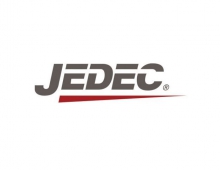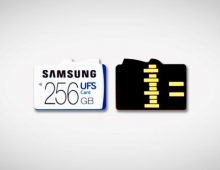
JEDEC Announces LPDDR2 Standard For Low Power Memory Devices
JEDEC Solid State Technology Association today announced the publication of JESD209-2 LPDDR2 Low Power Memory Device Standard, which offers advanced power management features, a shared interface for nonvolatile memory (NVM) and volatile memory (SDRAM), and a range of densities and speeds.
The standard is available for free download from JEDEC?s website at www.jedec.org and it is expected to enhance the design of such products as smart phones, cell phones, PDAs, GPS units, handheld gaming consoles, and other mobile devices by enabling increased memory density, improved performance, smaller size, overall reduction in power consumption as well as a longer battery life.
The JEDEC LPDDR2 standard offers several power-saving features. LPDDR2 includes a reduced interface voltage of 1.2V from the 1.8V specification in the previous (LPDDR) memory technology, which will result in a reduction in power consumption of over 50% under similar device density and performance conditions. The standard further encompasses devices having a core voltage of 1.2V (as compared to existing 1.8V core voltage devices), further decreasing device power consumption. In addition, LPDDR2 supports advanced mechanisms for managing power usage such as Partial Array Self Refresh and Per-Bank Refresh. Partial Array Self-Refresh, for example, allows portions of the array to be powered down when not required, permitting applications to determine device memory requirements on a real-time usage basis.
For the first time, a single JEDEC standard encompasses two distinct types of memory: NVM and SDRAM. The JEDEC LPDDR2 standard allows these two memory types to share a common bus interface, thereby reducing the controller pincount and facilitating increased memory package density. LPDDR2 NVM and SDRAM devices can be stacked, with a common interface, greatly simplifying memory controller and interface designs and offering space-saving opportunities to product developers.
In the JEDEC LPDDR2 standard, multiple device configurations are supported to meet the requirements of a wide array of mobile devices, including:
- An operating frequency range from 100MHz to 533MHz
- Data widths of x8, x16 and x32
- Two pre-fetch options (2 and 4-bit) as well as both 1.8 and 1.2 Volt core voltage options
- A wide range of device densities (NVM: 64Mb-32Gb, DRAM: 64Mb-8Gb), over time.
"The advanced power management features and flexible memory device configurations in JEDEC?s LPDDR2 standard will enable the development of a new generation of smaller, faster and more energy-efficient mobile products," said Mian Quddus, JEDEC Board of Directors Chairman. "Reducing power consumption, improving performance and a shared NVM/SDRAM interface will help the industry offer significant benefits to product developers and consumers."
The JEDEC LPDDR2 standard offers several power-saving features. LPDDR2 includes a reduced interface voltage of 1.2V from the 1.8V specification in the previous (LPDDR) memory technology, which will result in a reduction in power consumption of over 50% under similar device density and performance conditions. The standard further encompasses devices having a core voltage of 1.2V (as compared to existing 1.8V core voltage devices), further decreasing device power consumption. In addition, LPDDR2 supports advanced mechanisms for managing power usage such as Partial Array Self Refresh and Per-Bank Refresh. Partial Array Self-Refresh, for example, allows portions of the array to be powered down when not required, permitting applications to determine device memory requirements on a real-time usage basis.
For the first time, a single JEDEC standard encompasses two distinct types of memory: NVM and SDRAM. The JEDEC LPDDR2 standard allows these two memory types to share a common bus interface, thereby reducing the controller pincount and facilitating increased memory package density. LPDDR2 NVM and SDRAM devices can be stacked, with a common interface, greatly simplifying memory controller and interface designs and offering space-saving opportunities to product developers.
In the JEDEC LPDDR2 standard, multiple device configurations are supported to meet the requirements of a wide array of mobile devices, including:
- An operating frequency range from 100MHz to 533MHz
- Data widths of x8, x16 and x32
- Two pre-fetch options (2 and 4-bit) as well as both 1.8 and 1.2 Volt core voltage options
- A wide range of device densities (NVM: 64Mb-32Gb, DRAM: 64Mb-8Gb), over time.
"The advanced power management features and flexible memory device configurations in JEDEC?s LPDDR2 standard will enable the development of a new generation of smaller, faster and more energy-efficient mobile products," said Mian Quddus, JEDEC Board of Directors Chairman. "Reducing power consumption, improving performance and a shared NVM/SDRAM interface will help the industry offer significant benefits to product developers and consumers."





















